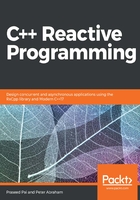
Managing threads
At runtime, the execution starts at the user entry point main() (after the execution of the start-up code), and it will be executing in a default thread that's been created. So, every program will have at least one thread of execution. During the execution of the program, an arbitrary number of threads can be created through a standard library or platform-specific libraries. These threads can run in parallel if the CPU cores are available to execute them. If the number of threads are more than the number of CPU cores, even though there is parallelism, we cannot run all of the threads simultaneously. So, thread switching happens here as well. A program can launch any number of threads from the main thread, and those threads run concurrently on the initial thread. As we can see, the initial function for a program thread is main(), and the program ends when the main returns from its execution. This terminates all the parallel threads. Therefore, the main thread needs to wait until all the children threads finish execution. So, let's see how the launch and join of threads occurs.